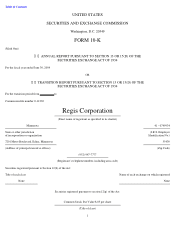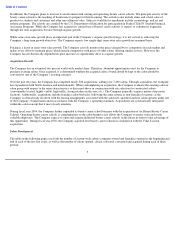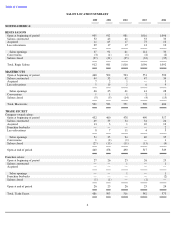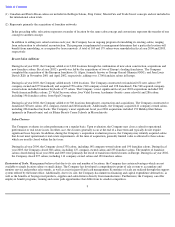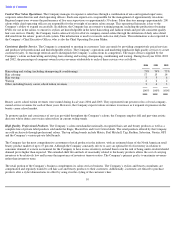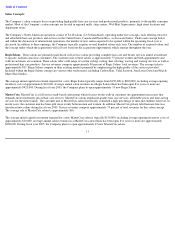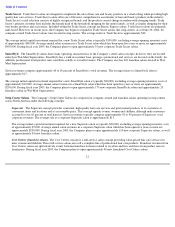Supercuts 2004 Annual Report Download - page 8
Download and view the complete annual report
Please find page 8 of the 2004 Supercuts annual report below. You can navigate through the pages in the report by either clicking on the pages listed below, or by using the keyword search tool below to find specific information within the annual report.
Table of Contents
Industry Overview:
Management estimates that annual revenues of the hair care industry are $53 billion in the United States and $150 billion worldwide. The
industry is highly fragmented with the vast majority of hair care salons independently owned. However, the influence of chains, both franchise
and company-owned, has increased substantially. Management believes that chains will continue to have a significant influence on the overall
market and will continue to increase their presence. Management also believes that the demand for salon services and products will continue to
increase as the overall population continues to focus on personal health and beauty, as well as convenience.
Business Strategy:
The Company’s goal is to provide high quality, affordable hair care services and products to a wide range of mass-market customers that
enable the Company to expand in a controlled manner. The key elements of the Company’
s strategy to achieve these goals are taking advantage
of (1) growth opportunities, (2) economies of scale and (3) maintaining centralized control over salon operations in order to ensure
(i) consistent, quality services and (ii) a superior selection of high quality, professional products. Each of these elements is discussed below.
Growth Opportunities. The Company’s expansion strategy focuses on organic (new construction and same-store sales growth) and acquisition
growth.
Organic Growth
The Company executes its organic growth strategy through a combination of new construction of company-owned and franchise salons, as
well as same-store sales increases. The relatively small capital and square footage requirements related to opening new salons allows the
Company great flexibility in securing real estate for new salons. Additionally, franchising plays an important role in the Company’
s overall
growth strategy.
The Company’s long-
term outlook for organic expansion remains strong. The Company has at least one salon in all major cities in the U.S.
and has penetrated every viable U.S. market with at least one concept. However, because the Company has a variety of concepts, it can
place several of its salons within any given market. The Company plans to continue expansion not only in North America, but also in the
United Kingdom and throughout Europe. Opportunities in Asian markets are also being explored.
A key component to successful North American and international organic growth relates to site selection, as discussed in the following
paragraphs.
Site Selection. The Company’s salons are located in malls, strip centers, lifestyle centers, Wal-Mart Supercenters and high-street
locations. The Company’s financial strength, successful salon operations and national recognition causes the Company to be an
attractive tenant to landlords. In evaluating specific locations for both company-owned and franchise stores, the Company seeks
conveniently located, highly visible sites in high traffic locations which allow customers adequate parking and quick and easy store
access. Various other factors are considered in evaluating sites, including trade area demographics, availability and cost of space, the
strength of the major retailers within the area, location of competitors, traffic count, signage and other leasehold factors in a given
center or area. All franchisee sites must be approved by the Company.
Because the Company’s different salon concepts target different mass-market customer groups, more than one of the Company’
s salon
concepts may be located in the same mall, strip center or lifestyle center. As a result, there are numerous leasing opportunities for all
of its salon concepts.
4



